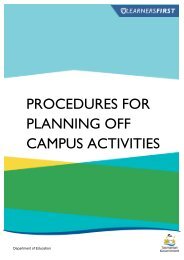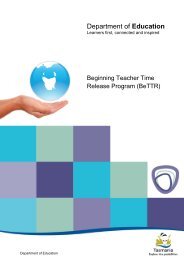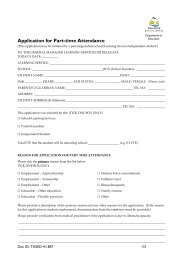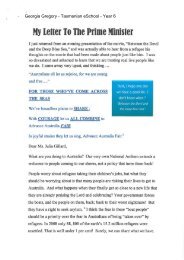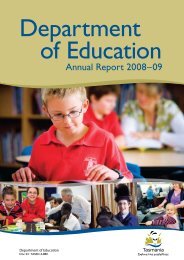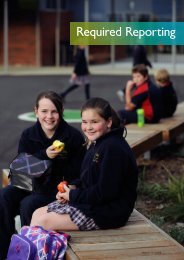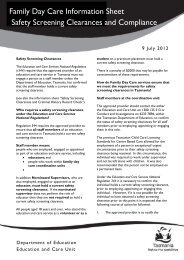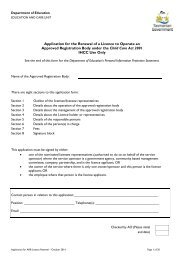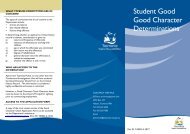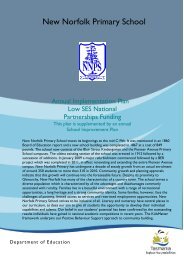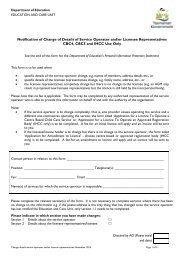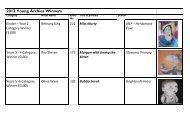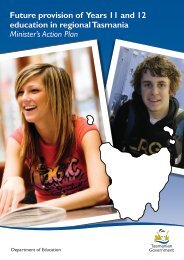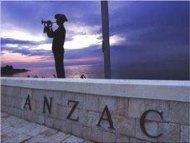Tas Curriculum K-10 - Languages - Italian - Department of Education
Tas Curriculum K-10 - Languages - Italian - Department of Education
Tas Curriculum K-10 - Languages - Italian - Department of Education
You also want an ePaper? Increase the reach of your titles
YUMPU automatically turns print PDFs into web optimized ePapers that Google loves.
Support materials<br />
Glossary<br />
Authentic<br />
Authentic resources are texts that are taken directly from the target language.<br />
Concept map<br />
A diagram or graphic organiser that shows the relationships between concepts. They are linked with<br />
connecting lines.<br />
Graphic organisers<br />
Ways <strong>of</strong> organising information in visual or diagrammatic forms. Examples include flow charts and timelines.<br />
Intercultural language learning is an approach to the teaching and learning <strong>of</strong> languages that has<br />
strong connections to inquiry thinking. It requires learners to adopt an inquiring state <strong>of</strong> mind, to notice<br />
and question assumptions and to reorient themselves in relation to others. It focuses on language<br />
interactions.<br />
'I see, I think, I wonder'<br />
This thinking strategy is useful for looking at visual texts. Students are asked ’What do you see? What do<br />
you think about that? What does it make you wonder?’<br />
K-W-L<br />
Stands for what I know, what I want to know and what I learned. A three column chart is ruled up on a<br />
page. Students brainstorm as a class or in groups what they know and list their prior knowledge (K) in the<br />
first column. They set their goals for learning (W) in the second column and reflect or evaluate their<br />
learning (L) in the third column.<br />
Language learning strategies<br />
Language learning strategies are intentional behaviours and ways <strong>of</strong> thinking used by language learners to<br />
better help them understand, learn, or remember new information.<br />
<strong>Languages</strong> (LOTE)<br />
The current national term for this learning area is ‘<strong>Languages</strong>’. However to avoid confusion during the<br />
transition, both terms are used in the local context.<br />
Modified<br />
Modified resources are authentic texts that are simplified or adapted to better meet student needs.<br />
Non-verbal communication<br />
Communication using signs, symbols, gestures and body language.<br />
Podcast<br />
Like a radio show, but instead <strong>of</strong> being broadcast live, a podcast is recorded, then distributed over the<br />
internet, so that it can be listened to directly from the website or downloaded and listened to at a later<br />
time. Podcasts range from general interest entertainment shows to those that focus on specific topics (e.g.<br />
computers / music / education). Students can create podcasts for sharing with others and can give feedback<br />
on the podcasts <strong>of</strong> others.<br />
Recognition<br />
Recognition indicates that a student has been introduced to a linguistic item but is not expected to be<br />
pr<strong>of</strong>icient in using or applying it. Recognition tends to be at the receptive stage.<br />
Text<br />
Any communication involving spoken, signed, written, visual, non-verbal or auditory language.<br />
79



